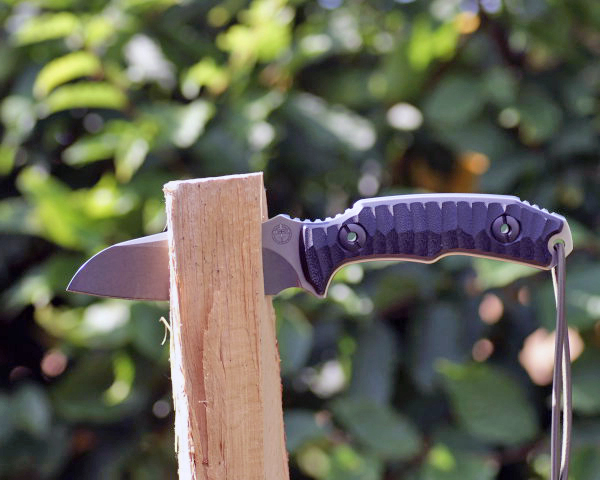Batoning on:
[Wikipedia]
[Google]
[Amazon]
 Batoning is the technique of cutting or splitting wood by using a baton-sized stick or mallet to repeatedly strike the spine of a sturdy
Batoning is the technique of cutting or splitting wood by using a baton-sized stick or mallet to repeatedly strike the spine of a sturdy
 Batoning is the technique of cutting or splitting wood by using a baton-sized stick or mallet to repeatedly strike the spine of a sturdy
Batoning is the technique of cutting or splitting wood by using a baton-sized stick or mallet to repeatedly strike the spine of a sturdy knife
A knife ( : knives; from Old Norse 'knife, dirk') is a tool or weapon with a cutting edge or blade, usually attached to a handle or hilt. One of the earliest tools used by humanity, knives appeared at least 2.5 million years ago, as evidence ...
, chisel or blade
A blade is the portion of a tool, weapon, or machine with an edge that is designed to puncture, chop, slice or scrape surfaces or materials. Blades are typically made from materials that are harder than those they are to be used on. Histor ...
in order to drive it through wood, similar to how a froe is used. The batoning method can be used to make kindling or desired forms such as boards, slats or notches. The practice is most useful for obtaining dry wood from the inside of logs for the purpose of fire making
Fire making, fire lighting or fire craft is the process of artificially starting a fire. It requires completing the fire triangle, usually by heating tinder above its autoignition temperature.
Fire is an essential tool for human survival and ...
.
Tools
Tools used in batoning are: a strong, fixed-blade, preferably full tang knife ormachete
Older machete from Latin America
Gerber machete/saw combo
Agustín Cruz Tinoco of San Agustín de las Juntas, Oaxaca">San_Agustín_de_las_Juntas.html" ;"title="Agustín Cruz Tinoco of San Agustín de las Juntas">Agustín Cruz Tinoco of San ...
with a thick spine, and a club-sized length of dense or green wood
Green wood is wood that has been recently cut and therefore has not had an opportunity to season (dry) by evaporation of the internal moisture. Green wood contains more moisture than seasoned wood, which has been dried through passage of time or ...
for striking the knife's spine and tip.
Technique
The basic method involves repeatedly striking the spine of the knife to force the middle of the blade into the wood. The tip is then struck, to continue forcing the blade deeper, until a split is achieved.Uses and advantages
This technique is useful for the simple splitting of wood for kindling, to access dry wood within a wet log, and for the production of shingles, slats, or boards. It is also useful for cutting notches, or making clean crosscuts against the grain of the wood. The technique is also especially useful when a chopping tool is not available.Hazards
Care must be taken to avoid damage to the knife. Breakage of the blade is a common result of striking the spine of the knife at an angle. If this happens the broken blade can become irretrievably embedded within the split. In a survival situation, this can be catastrophic.See also
*Bushcraft
Bushcraft is the use and practice of skills, thereby acquiring and developing knowledge and understanding, in order to survive and thrive in a natural environment.
Bushcraft skills provide for the basic physiological necessities for human li ...
*Fire making
Fire making, fire lighting or fire craft is the process of artificially starting a fire. It requires completing the fire triangle, usually by heating tinder above its autoignition temperature.
Fire is an essential tool for human survival and ...
*Scoutcraft
Scoutcraft is a term used to cover a variety of woodcraft knowledge and skills required by people seeking to venture into wild country and sustain themselves independently. The term has been adopted by Scouting organizations to reflect skills and ...
* Survival skills
*Woodcraft
The term woodcraft — or woodlore — denotes bushcraft skills and experience in matters relating to living and thriving in the woods—such as hunting, fishing, and camping—whether on a short- or long-term basis. Traditionally, woodcraft per ...
References
External links
* {{dmoz, Recreation/Outdoors/Survival_and_Primitive_Technology/, Survival and Primitive Technology Firelighting materials Primitive technology Procedural knowledge Scoutcraft Simple living Survival skills Woodworking